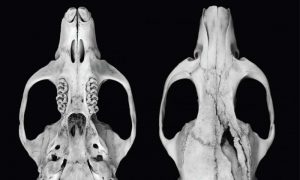 A new species of rat, which is four times the size of the rodent that is found across cities in North America, has been discovered in the Solomon Islands.
A new species of rat, which is four times the size of the rodent that is found across cities in North America, has been discovered in the Solomon Islands.
This discovery is just the first in 80 years that a new species of rat was found in the South Pacific archipelago.
Rumors swirled about for the past seven years of a giant rat that ate coconuts known as vika and was living in trees on Vanunu Island. People from that island had even written songs and made up children rhymes about the coconut-loving rats. However, following several tries, the rate was never found.
Lavery said that immediately upon examining the rodent, he knew something different had been found.
The rat did not resemble any of the eight known species of rats that are native to the islands, and when he compared it to collections in museums, and checked the DNA of rat, he confirmed it indeed was a new species. He called the species Uromys vika.
From its nose to its tail, the rate measures 18 inches (46 cms.) long. Rats in the Solomon Islands can weigh as must as 2.2 pounds. For comparison, black rats that were spread across the globe aboard ships from Europe, typically will weigh less than half a pound.
Thousands of new species are discovered annually, but close to 50% that make the new list are arachnids or insects, shows data from a report in the New York Times.
It is quite rare to find undiscovered large animals as only a few dozen mammals are discovered each year.
He said that vika’s ancestors likely arrived on the island on some vessel and then evolved into the new species after being isolated for years.
However, the vika, which the Journal of Mammalogy describes in its latest issue, could already be near extinction. The rat species is considered to be critically endangered because of its native habitat being so small and there is a very low population density; and it is threatened as well by commercial logging that is taking place on Vanunu Island.
Lavery said that if they had not discovered the rat when they did, it might not ever have been discovered, as the area in which it was discovered was about the last part of forest on the island that had not been logged.
